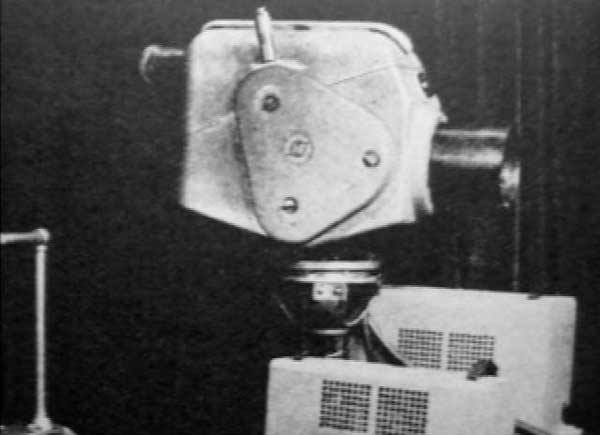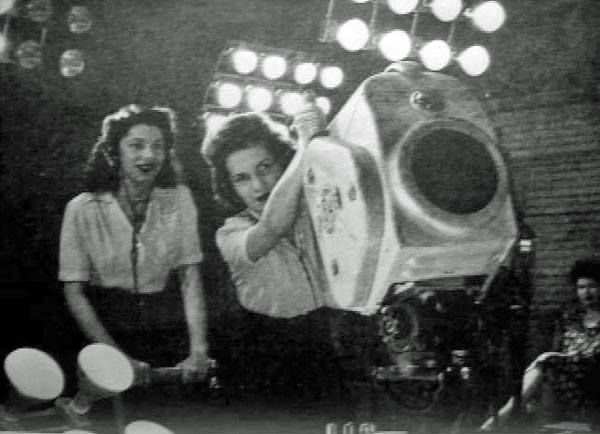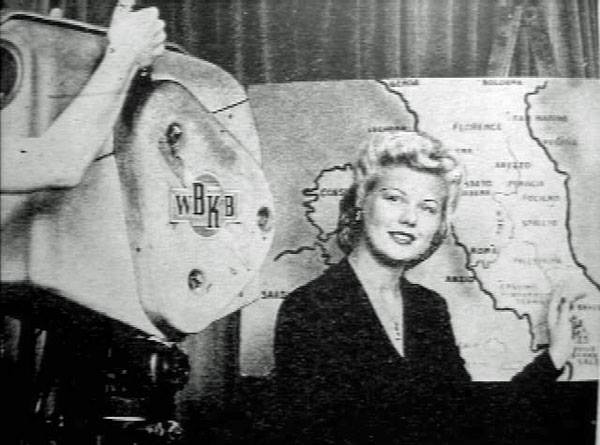

Television’s Forgotten Pioneer…The Amazing Captain Bill Eddy
Television’s Forgotten Pioneer…The Amazing Captain Bill Eddy
Frankly, my head exploded this morning when I sat down to write what I thought would be an interesting piece on the revolutionary television camera that Eddy patented on this day, February 28, 1942, BUT…as it turns out, that is one of his least accomplishments!
While preparing the camera story (now at the bottom of this article), I began to research Mr. Eddy and was totally blown away! Really!
In a nut shell, this man
(1) Was a Navy submarine officer in the early 30s, designed the submariner “Dolphin” badge which is still in use, developed a visual tracking device for sonar, was in charge of the electronics school for submarine officers and developed four sonar secret patents.
(2) In 1935, joined Philo Farnsworth in this new research operations in Philadelphia where he developed new equipment for Philo’s W3XPF. Eddy essentially “wrote the book” for emerging studio activities.
(3) In 1937, RCA recruited him and he worked at NBC’s W2XBS in New York, and was part of the first ever baseball telecast. Here, Eddy applied for 43 patents while creating the field of “sight effects” which meant using miniatures, special sets and lighting effects to illustrate stories that were happening outside of the studio.
(4) Soon after, he was recruited by the Balaban & Katz theater chain to bring television to Chicago. In April of ’41, W9XBX went on the air. When he left NBC, execs bet he couldn’t get the station on the air in 6 months, and for less than half a million dollars…he did it in five months on $60,000.
When Pearl Harbor was bombed, Eddy went to the Navy and volunteered to start a Radar school to train operators. Through the war years, 30,000 students were taught at the WBKB facilities where Eddy kept a hand in things. The station stayed on during the war and was fully staffed by women. At the end of the war, Eddy was offered the rank of Rear Admiral, but went back to WBKB instead.
(5) At WBKB…believe it or not…Eddy put “Kukla, Fran & Ollie” on the air in one day!!! Here he is telling the story! Unbelievable!
http://www.speakingofradio.com/interviews/eddy-capt-william-c-executive/
(6) In 1945, he found time to write “Television…The Eyes Of Tomorrow”, which is a stunningly detailed book on the history of, and the “how to” of television. Click this link to see and download it.
https://worldradiohistory.com/BOOKSHELF-ARH/Commentary/Television-the-Eyes-of-Tomorrow-Eddy-1945.pdf
(7) In ’47, he started his own company, Television Associates of Indiana which built TV stations, and developed equipment for Arial surveys. This genius even invented the continuous loop, 8 truck cartridge tape system for the Navy AND…what would become today’s cruise control, originally called the Turnpike Pacer. BUT WAIT…There’s More!
(8) Here is the camera Captain Eddy designed which was ahead of its time. https://www.google.com/patents/US2315406
At the link is the patent with nine more drawings of this camera, designed and built by WBKB Chicago’s, William Eddy. It was registered on the date in 1942, in the middle of WW II, while Eddy was head of the Navy Radar School in Chicago.
The big leaver on the side of this is the focus control and unlike all the other Iconoscope cameras of this period, it had an electronic viewfinder inside the camera body. (RCA had optical viewfinders, and Dumont had their electronic viewfinder on the left side of their cameras).
In conclusion, all I can say is, I totally agree with this Chicago Tribune article which asks the question; why has Mr. Eddy not been given his rightful salute as one of America’s great electronic pioneers? BRAVO SIR, AND WELL DONE!!! Please share! -Bobby Ellerbee



I worked with several guys who had been at WBKB after the war in the early days of WFLD. In fact, we were in one of the original WBKB studios on top of the Opera House. One direct connection we had was a kaleidoscope projector that Capt. Eddy had designed. It fit on one of the film chains and we used it every day for our afternoon sign on. Color images and music, it must have been popular with druggies. The sad news was somebody stole it and we had to rely on a 16mm version that had been made as a backup.
Interesting because I attended the Navy Radar School in Chicago in 1969.
It was Balaban and Katz (Barnie Balaban was a Paramount exec who helped torpedo DuMont because of its large non-controlling stake in the company.) DuMont’s Chicago affiliate was WGN. The FCC ruled that Paramount’s interest in DuMont’s O&Os in NYC, DC and Pittsburgh prevented either company from buying more TV stations. DuMont wanted Boston (5), Cleveland (19) and Cincinnati — Paramount wanted San Francisco. The combination of Paramount’s hostile interest in DuMont, distribution issues caused by lack of uhf acceptance in the market and lack of a radio network to help fund AT&T’s cable fees prevented DuMont from even having an opportunity to strengthen their management team and make better programming choices.
Just a matter wbkb television from Chicago was it a subsidiary of the Dumont?